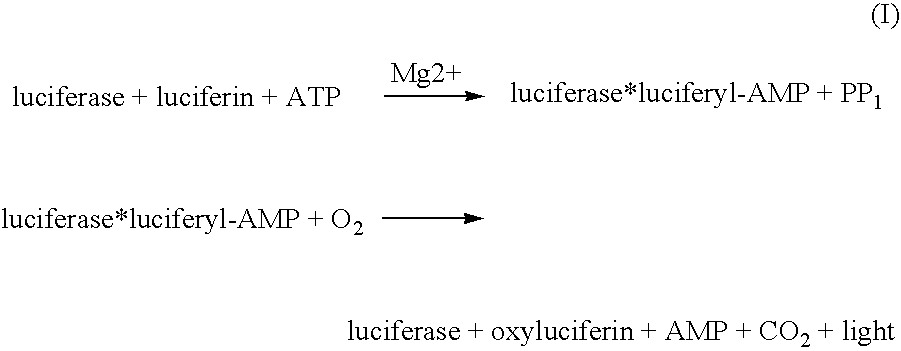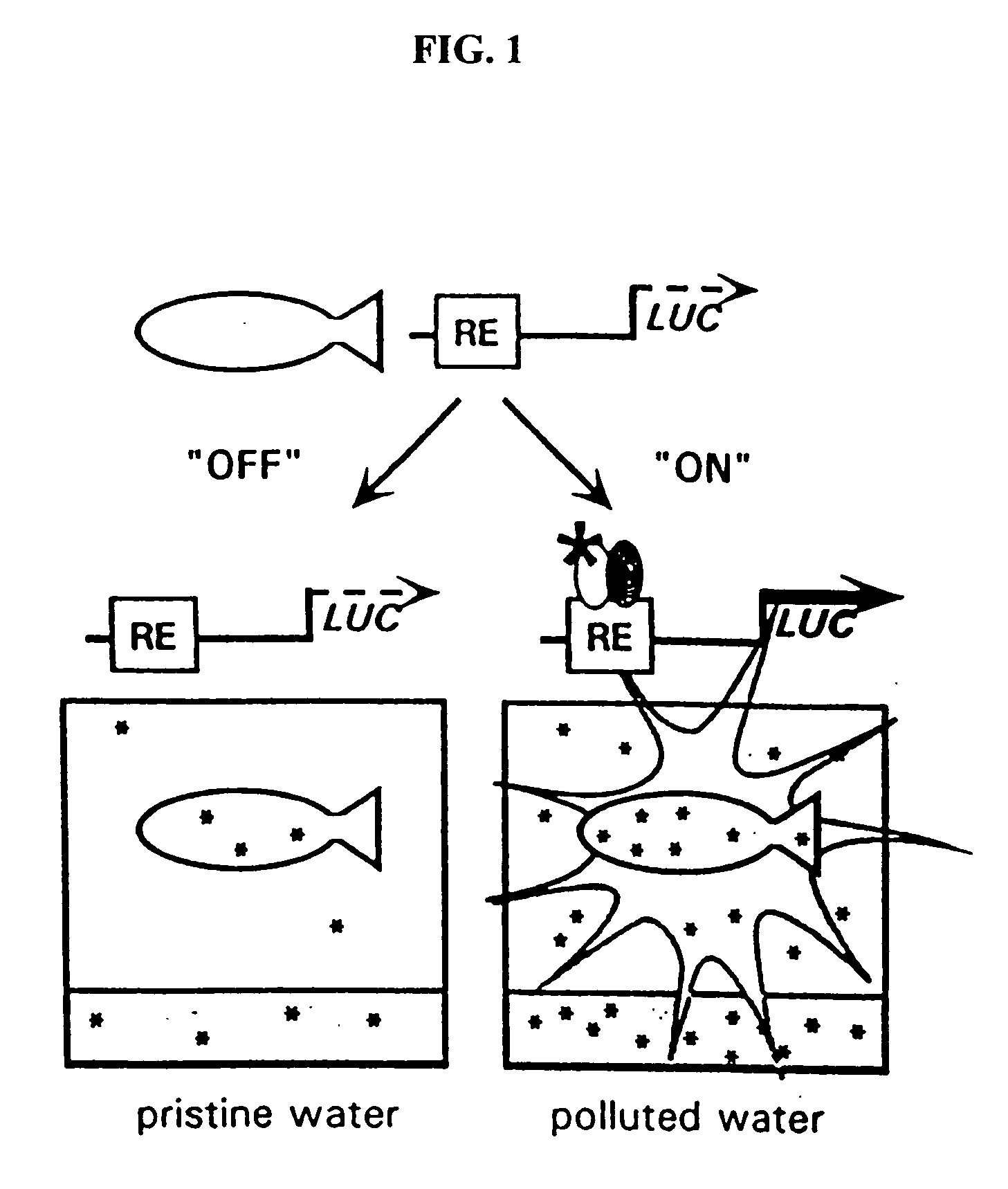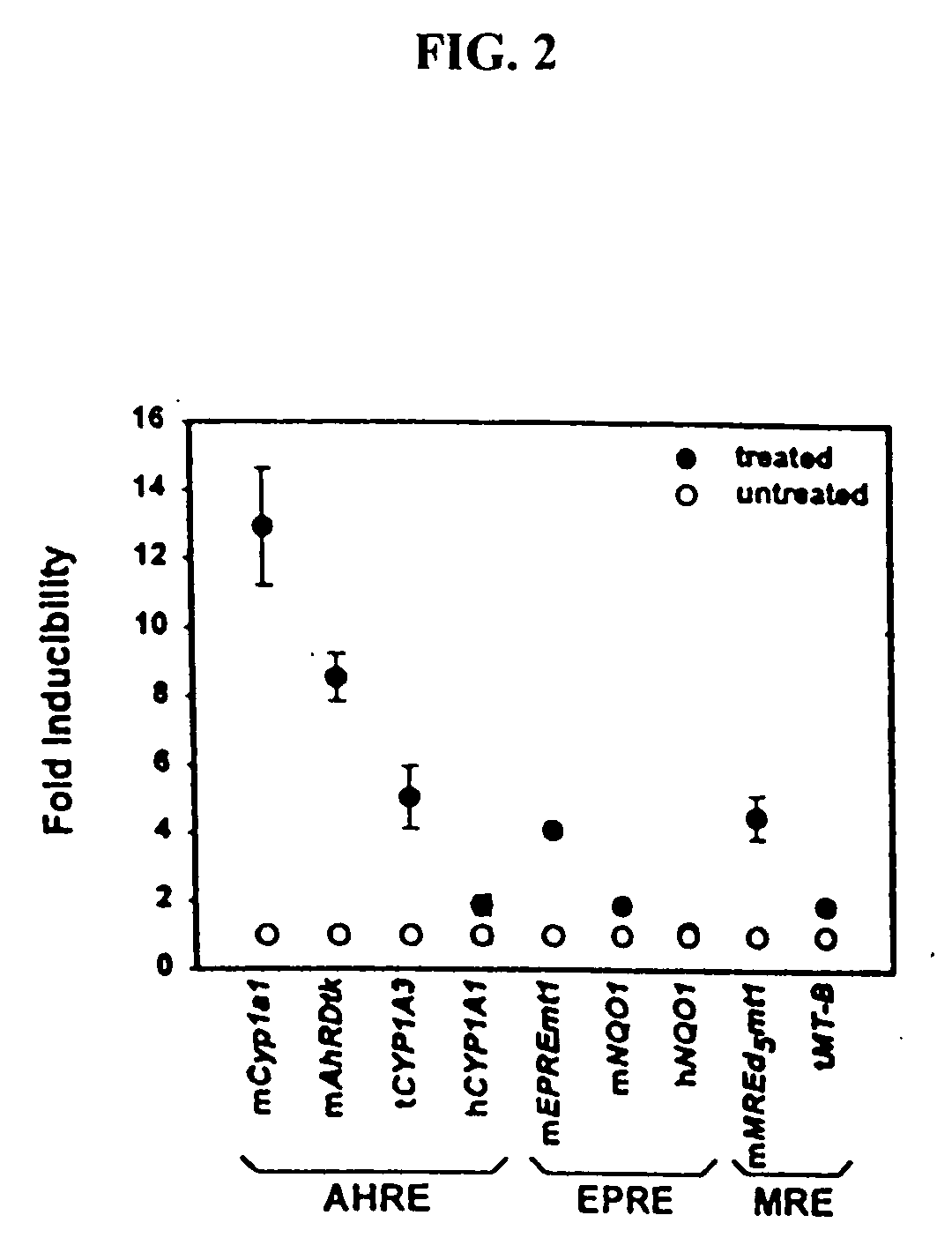Transgenic animals for monitoring water quality
a technology of transgenic animals and water quality, applied in the direction of instruments, pollution detectors, material analysis by optical means, etc., can solve the problems of increasing data analysis is much faster, and the cost of traditional analytical chemical equipment is high, so as to reduce the cost per sample, increase the time required for data acquisition and analysis, and reduce the cost of data acquisition. the effect of cos
- Summary
- Abstract
- Description
- Claims
- Application Information
AI Technical Summary
Benefits of technology
Problems solved by technology
Method used
Image
Examples
examples
[0098] Fo transgenic zebrafish express transgenes into adulthood. Embryos were microinjected with supercoiled plasmid at the 1- or 2-cell stage, and visualized or assayed 24 h later. The rate at which embryos survived microinjection and expressed the transgene is shown in TABLE 2. The EF1-GFPZ-MTLCR construct gave the best embryo survival rate, and also produced a very high number of embryonic cells expressing GFPzeo. High levels of expression in these zebrafish have been maintained for more than 180 days, and the transgene has been successfully transmitted into the F1 and, sometimes the F2, generation following which it is lost. Other laboratories have had the same difficulties in sustaining transgene expression beyond the F2 generation in zebrafish, for reasons not known but possibly due to an efficient genome surveillance system in this species. Another possible explanation might be related to gene silencing in mammals, plants, and Drosophila which has been observed when multiple...
PUM
 Login to View More
Login to View More Abstract
Description
Claims
Application Information
 Login to View More
Login to View More - R&D
- Intellectual Property
- Life Sciences
- Materials
- Tech Scout
- Unparalleled Data Quality
- Higher Quality Content
- 60% Fewer Hallucinations
Browse by: Latest US Patents, China's latest patents, Technical Efficacy Thesaurus, Application Domain, Technology Topic, Popular Technical Reports.
© 2025 PatSnap. All rights reserved.Legal|Privacy policy|Modern Slavery Act Transparency Statement|Sitemap|About US| Contact US: help@patsnap.com



